Introduction
Caring for senior dogs is a rewarding yet challenging endeavor. As our furry friends age, they may face various mobility issues that complicate their daily lives. Imagine your once sprightly pup now struggling to jump onto the couch. It can be heart-wrenching! Mobility limitations can stem from several factors, including arthritis, hip dysplasia, or simply the wear and tear of aging. These conditions can significantly affect a dog’s quality of life, leading to discomfort and frustration.
Adapting your care routine is essential for ensuring that your senior dog remains happy and comfortable. You wouldn’t want your beloved pet to feel like they’re in a prison of their own making, would you? Instead, it’s all about creating an environment that fosters their independence while providing the necessary support.
This post aims to equip pet owners with best practices and actionable advice to navigate the unique challenges of caring for senior dogs with mobility issues. From understanding the underlying causes of mobility loss to creating a comfortable living environment, we’ll cover everything you need to know to give your furry friend the golden years they deserve. And while you’re at it, consider investing in PetSafe Solvit PupSTEP Plus Pet Stairs to help your pup reach their favorite spots without the struggle!
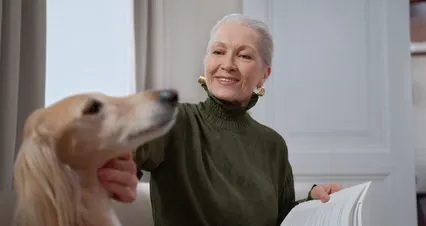
Understanding Mobility Issues in Senior Dogs
Causes of Mobility Loss
Senior dogs can experience mobility loss due to various health conditions. The most common culprits include arthritis, hip dysplasia, and degenerative myelopathy. Arthritis, a degenerative joint disease, inflames joints and makes movement painful. Hip dysplasia, a genetic condition, affects the hip joint’s formation, causing discomfort and reduced mobility. On the other hand, degenerative myelopathy is a progressive disease of the spinal cord, leading to hind leg weakness and eventual paralysis.
Obesity plays a significant role in exacerbating these mobility issues. Extra weight adds unnecessary strain on joints, making movement even more difficult. As dogs age, muscle mass naturally decreases, further contributing to their challenges in getting around. Combine that with general aging, and you’ve got a recipe for mobility woes. To tackle this, consider adding Zesty Paws Omega-3 Salmon Fish Oil to their diet for joint support!
Recognizing these causes is crucial for providing the right care and support. Regular vet check-ups can help diagnose underlying issues early, allowing for timely interventions. You wouldn’t want to miss that golden opportunity to keep your dog moving with ease! By understanding the reasons behind their mobility loss, you’ll be better equipped to implement effective strategies to improve their quality of life.
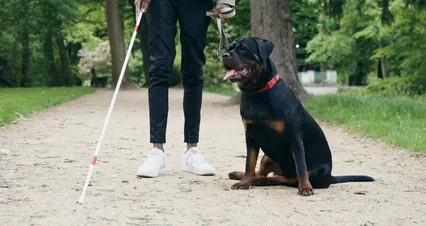
Signs and Symptoms to Watch For
As our furry pals age, keeping an eye on their mobility is crucial. Here are some telltale signs your senior dog might be struggling:
- Limping: If your pup’s strut resembles a broken-down car, it’s time to pay attention.
- Reluctance to Move: A sudden disinterest in their favorite walks could signal discomfort.
- Difficulty Rising: Watch for those awkward moments when they need a little extra oomph to get up.
- Wobbly Gait: A unsteady march is a red flag. If they look like they’ve had one too many at the dog park, it’s time for a check-up.
Early detection is key! The sooner you notice these signs, the faster you can help your furry friend. Identifying mobility issues early can lead to effective management strategies. Quick action can alleviate pain and improve their quality of life, ensuring their golden years are indeed golden. And while you’re watching for these signs, consider a fun distraction like the Outward Hound Hide-A-Squirrel Puzzle Toy to engage their minds!

Creating a Comfortable Living Environment
Your home should be a haven for your senior dog, especially if they are facing mobility issues. Here are some effective home modifications to make life easier for your beloved companion.
Home Modifications
Traction on Floors: Hardwood and tile floors can be like an ice rink for older dogs. Slipping can lead to injuries and anxiety. Consider laying down rugs or using non-slip mats to create safer pathways. Bonus points for stylish décor too!
Ramps and Stairs: For dogs who can no longer leap onto their favorite couch or into the car, ramps are a lifesaver. Choose ramps with a gentle slope and non-slip surfaces. If you have stairs, pet stairs are a great alternative. They allow your dog to access their favorite spots without straining their joints. You might want to check out the PetSafe Solvit PupSTEP Extra Wide Pet Stairs for extra support!
Designated Spaces: Creating comfortable resting spots is essential. Invest in orthopedic beds that support aching joints. Also, consider elevating food and water bowls—this small change can reduce strain on their back and neck. After all, we want our senior pals to enjoy their meals without the acrobatics! A PetFusion Ultimate Dog Bed can provide that cozy support!
Avoiding Obstacles: Clear pathways of any clutter or furniture that may pose a tripping hazard. Ensure doors are easy to navigate, and consider using baby gates to limit access to areas that could be risky, like stairs.
Lighting: Good lighting is essential for senior dogs, especially if they are experiencing vision changes. Install night lights in high-traffic areas to help them navigate their environment safely.
Temperature Control: Older dogs may be more sensitive to heat and cold. Make sure they have access to a comfortable temperature, whether it’s a cozy blanket in winter or a cool spot in summer. A PetFusion Dog Cooling Mat can work wonders in summer!
Accessible Outdoor Space: If your dog enjoys the great outdoors, make sure their outdoor space is easy to access. A flat, secure area without steps will help them roam freely without fear of slipping or falling.
With these modifications, you can create a safe and comfortable haven for your senior dog. Remember, a little effort goes a long way in enhancing their quality of life. Your furry friend deserves a cozy, supportive space to enjoy their golden years!
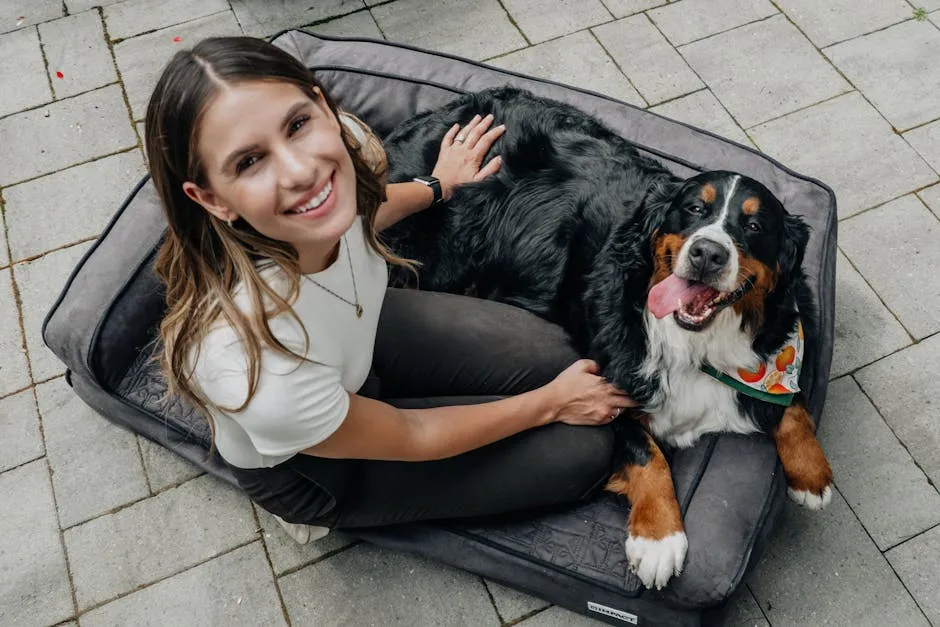
Nutrition and Weight Management
Diet Adjustments for Senior Dogs
As your dog ages, their nutritional needs change. It’s essential to choose senior-specific dog food. These formulas are typically lower in calories but rich in essential nutrients. Why? Senior dogs often need fewer calories to maintain a healthy weight. This helps curb obesity, which can further complicate mobility issues. For more detailed guidance on this topic, check out our Guide to choosing the right dog food for senior dogs.
Choosing the right diet is crucial for senior dogs. Explore our comprehensive guide on dog food for seniors to ensure your pet gets the best nutrition.
Look for dog food that contains high-quality protein. It should support muscle maintenance without adding unnecessary calories. Ingredients like chicken, fish, and lamb are excellent choices. Also, consider fiber-rich options to support digestion.
Supplements can play a vital role too. Omega-3 fatty acids are especially beneficial. They help reduce inflammation and support joint health. Think of them as a soothing balm for your dog’s joints! Consult your vet before adding any supplements to your dog’s diet. For a tasty option, why not try Zesty Paws Probiotic Bites to ensure gut health?
Keep an eye on your dog’s weight. Regular weigh-ins can help you track changes. If your senior dog gains a few extra pounds, you may need to adjust their food portions. Portion control is key to ensuring they stay healthy.
Hydration is also crucial. Make sure your dog has access to fresh water at all times. As dogs age, their thirst mechanisms may weaken. So, encourage them to drink regularly. A PetSafe Dog Water Fountain can encourage them to stay hydrated!
Incorporating these dietary adjustments can significantly improve your senior dog’s overall health. When combined with a proper exercise routine, they can help your furry friend maintain their mobility and energy levels. A happy pup is a healthy pup!
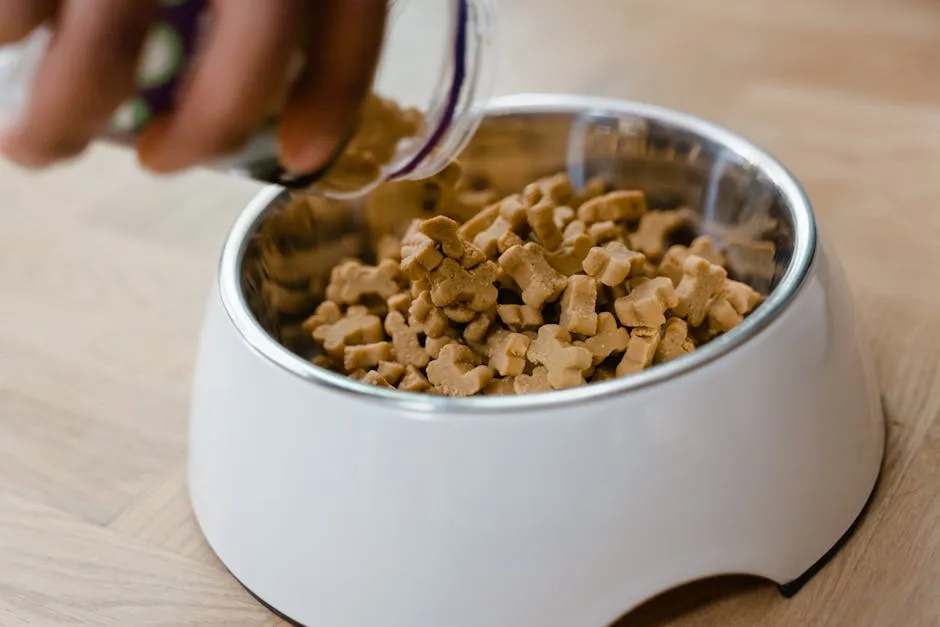
Physical Activity and Mental Stimulation
Exercise Recommendations
Senior dogs still need regular exercise, even with mobility issues. It’s crucial to adjust their activity levels to match their capabilities. Think of it as a delicate dance, where you must lead without stepping on their toes.
Start with short, gentle walks. Aim for about 10 to 15 minutes a day. If your dog seems eager, gradually increase the duration. Just keep an eye on their energy levels! Too much too soon might leave them feeling like they just ran a marathon.
Swimming is another fantastic option! It’s like the ultimate spa day for dogs. The buoyancy of water supports their weight, easing joint stress. Plus, swimming can help maintain muscle tone and joint flexibility. Remember to supervise your pup, though. Even the strongest swimmer can tire out unexpectedly! A Outward Hound Dog Life Jacket can keep them safe while they enjoy their swim!
Incorporate some fun activities that suit their physical abilities. Gentle play sessions with soft toys or a game of fetch with a lightweight ball can stimulate both their body and mind. Just remember: it’s not about winning; it’s about having a good time!
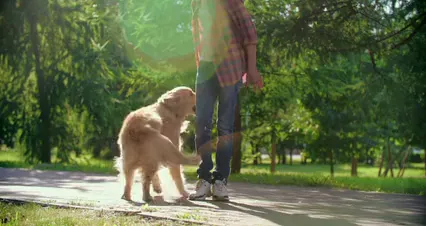
Mental Stimulation
Keeping your senior dog’s mind sharp is just as important as physical exercise. Engaging their brain can help slow cognitive decline. Think mental gymnastics instead of couch potato!
Interactive toys and puzzles are perfect for this. Toys that dispense treats when solved can keep your furry friend entertained for hours. They’ll be wagging their tail with joy as they figure out how to get that tasty reward! The Tuffy’s Ultimate Dog Toy could be a great option for interactive play!
Training activities also work wonders. Reinforce basic commands or teach new tricks. Even simple tasks like “sit” or “shake” can provide mental stimulation. Not to mention the bonding time you’ll share!
Consider introducing scent games. Hide treats around the house and let your dog use their nose to find them. This taps into their natural instincts and can be incredibly rewarding. Watching them sniff out hidden treasures will bring a smile to your face!
In conclusion, a blend of regular, gentle exercise and mental stimulation is key to keeping your senior dog happy and healthy. This combination will help maintain their overall well-being, both physically and mentally, ensuring their golden years are filled with joy and vitality.
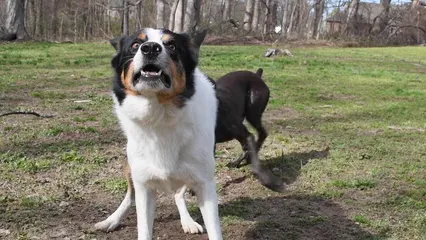
Veterinary Care and Alternative Treatments
Importance of Regular Vet Visits
Regular veterinary check-ups are crucial for senior dogs, especially those facing mobility challenges. Aim for bi-annual visits to monitor health and catch issues early. Think of it as your dog’s version of a spa day—only with more poking and prodding!
During these visits, your vet will assess your dog’s overall health. This includes checking for signs of arthritis, hip dysplasia, or other conditions impacting mobility. Early detection is key! The sooner you address issues, the better your dog’s quality of life.
Your veterinarian may recommend various treatments. Pain management is often priority number one. This could include anti-inflammatory medications or pain relievers to keep your furry friend comfortable. Physical therapy is another option. Canine rehabilitation specialists can create tailored exercise plans to strengthen muscles and enhance mobility. Who knew a little stretching could do wonders?
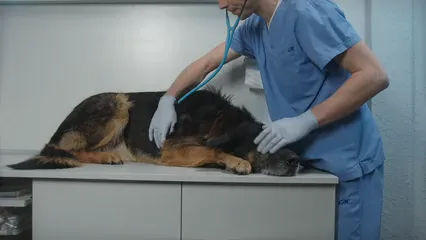
Alternative Therapies
In addition to veterinary care, consider alternative therapies. Many pet owners are turning to options like acupuncture and hydrotherapy. Acupuncture can relieve pain and improve joint function. Imagine your pup enjoying a gentle needle massage! Hydrotherapy, on the other hand, involves swimming or walking on underwater treadmills. It’s a low-impact exercise that reduces stress on joints while promoting strength. You could also explore Adaptil Calming Diffuser for Dogs to create a soothing environment!
Massage therapy is another fantastic option. A good rubdown can help alleviate tension and improve circulation. Plus, who doesn’t love a good belly rub?
Don’t forget about laser therapy! This exciting treatment uses light to reduce inflammation and promote healing. It’s like giving your dog a spa day with extra healing powers. As always, consult your vet before choosing alternative treatments. They can guide you to the best options for your senior dog’s specific needs.
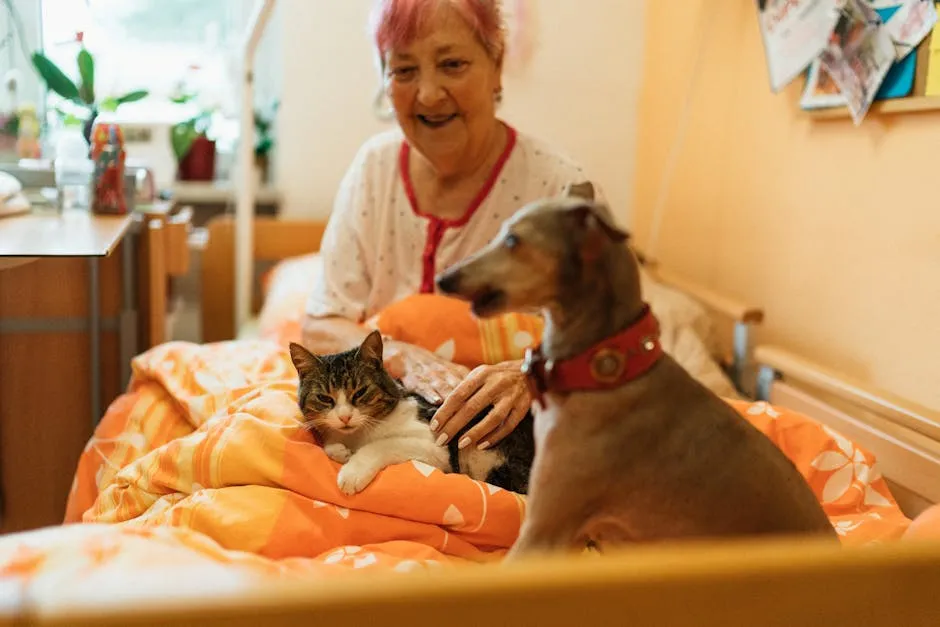
Conclusion
Caring for senior dogs with mobility issues requires a proactive approach. Regular vet visits are essential for monitoring health and addressing issues early. Combine this with alternative therapies like acupuncture and hydrotherapy, and you’re well on your way to improving your dog’s quality of life.
Always remember, love and companionship play a vital role in your dog’s happiness. Your senior pup may need a little extra help, but your dedication will make their golden years truly shine. So, embrace the journey together, and let your dog feel the warmth of your love and support!
With a little patience, understanding, and the right care plan, your senior dog can continue to enjoy life to the fullest, tail wagging and all! And to help with training, consider the PetSafe Dog Training Collar for effective training!
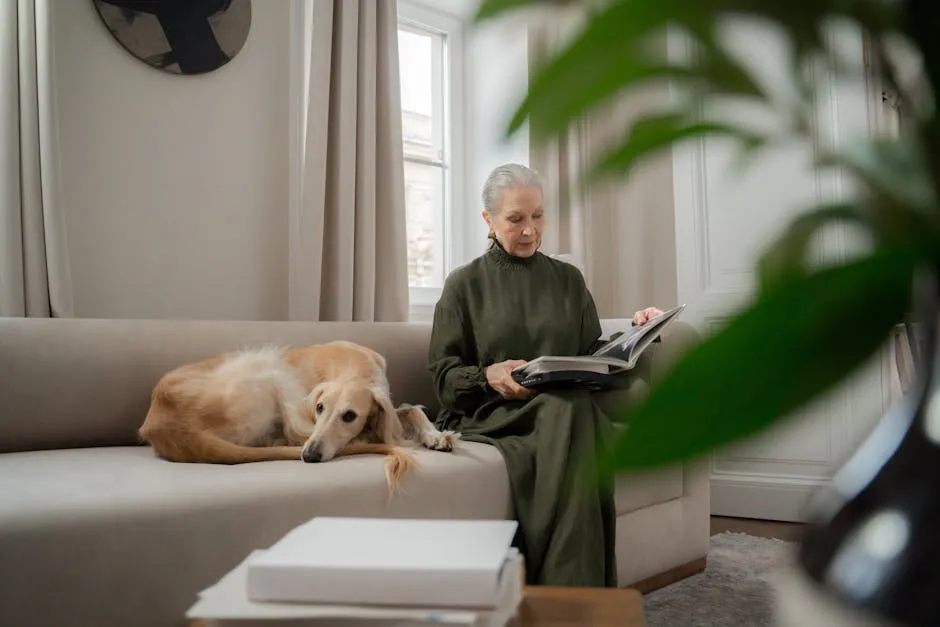
FAQs
Common Questions
What is considered a senior dog?
A senior dog is generally classified as one that has reached a certain age based on breed and size. Small breeds are considered seniors around 10-12 years, while large breeds may hit that mark as early as 6-8 years.
How can I tell if my dog is in pain?
Look for signs like limping, reluctance to move, excessive licking of joints, or changes in behavior. If your dog seems less playful or has difficulty getting up, it may indicate discomfort.
What are the best exercises for senior dogs?
Gentle walks, swimming, and low-impact activities are ideal. Short, frequent sessions are better than long, strenuous ones. Always adapt to your dog’s energy levels.
When should I consider a wheelchair for my dog?
If your dog struggles to walk or stand, a wheelchair can help them regain mobility. Consult your vet to determine if this is the right option for your pet.
Are there any specific dietary needs for senior dogs?
Senior dogs often require diets lower in calories but higher in fiber and essential nutrients. Omega-3 fatty acids can support joint health. Always consult your vet for recommendations.
What home modifications can help my dog with mobility issues?
Consider adding ramps, using non-slip mats, and raising food and water bowls. These changes can make a significant difference in your dog’s comfort and safety at home.
What is considered a senior dog?
A senior dog is generally classified as one that has reached a certain age based on breed and size. Small breeds are considered seniors around 10-12 years, while large breeds may hit that mark as early as 6-8 years.
How can I tell if my dog is in pain?
Look for signs like limping, reluctance to move, excessive licking of joints, or changes in behavior. If your dog seems less playful or has difficulty getting up, it may indicate discomfort.
What are the best exercises for senior dogs?
Gentle walks, swimming, and low-impact activities are ideal. Short, frequent sessions are better than long, strenuous ones. Always adapt to your dog’s energy levels.
When should I consider a wheelchair for my dog?
If your dog struggles to walk or stand, a wheelchair can help them regain mobility. Consult your vet to determine if this is the right option for your pet.
Are there any specific dietary needs for senior dogs?
Senior dogs often require diets lower in calories but higher in fiber and essential nutrients. Omega-3 fatty acids can support joint health. Always consult your vet for recommendations.
What home modifications can help my dog with mobility issues?
Consider adding ramps, using non-slip mats, and raising food and water bowls. These changes can make a significant difference in your dog’s comfort and safety at home.
Please let us know what you think about our content by leaving a comment down below!
Thank you for reading till here 🙂
All images from Pexels





